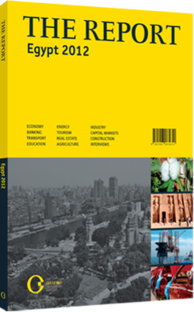Farouk El Okdah, Governor, Central Bank of Egypt (CBE), on pragmatic crisis management

Before analysing Egypt’s economic profile in the first quarter of 2011, I want to take us back to the fourth quarter of 2010, because it is important to characterise the conditions of the Egyptian economy at the outset of the revolution. Egypt entered the revolution on a comfortable cushion, a by-product of banking sector and monetary policy reforms implemented in 2004, which had helped the central bank and the government manage the macroeconomic environment of the last 18 months. These benefits came in the form of structural surplus liquidity in the banking sector, on the back of the sizeable capital inflows in the years since 2006. This was also reflected in the all-time high levels of net international reserves, which reached $36bn.
The political events towards the end of January 2011 and during the first week of February created a high level of uncertainty, and it is well known that political uncertainty is any central bank’s biggest enemy. Under these circumstances, the CBE’s main objective was to safeguard people's confidence in the banking sector and ensure the required liquidity in both domestic and foreign currency markets.
In the days immediately following January 28, 2011, banks were closed for a week due to the lack of security. Under these circumstances and in a pre-emptive action to address above-average demand for domestic currency, the CBE released LE23bn ($3.85bn) in February 2011 and transported funds to the governorates with the assistance of the armed forces to ensure the availability of cash in ATMs. Given the anticipation of high numbers of withdrawals after banks reopened, the CBE imposed restrictions on daily withdrawals of domestic currency for individuals, limiting it to LE50,000 ($8370). This was meant to mitigate panic withdrawals from banks and the limit was lifted in April 2011.
In another move to address concerns of political uncertainty, the CBE imposed restrictions on foreign currency transfers of the household sector, limiting it to $100,000 to prevent the transfer of illegally-obtained funds. However, certain exceptions included: (i) funds of foreign portfolio investors; (ii) trade-related transactions; (iii) funds of foreign corporations in Egypt. This allowed Egyptian households and investors – including foreign investors – to efficiently test the markets, and consequently helped create the confidence needed to protect the country from a possible bank run.
In the meantime, the balance of payments deteriorated on the back of significant outflows from the domestic treasury bills market. Capital outflows were $5bn in the first quarter of 2011 alone. This led banks to drawdown their reserve balances, and to purchase foreign currency in the dollar inter-bank market, as well as precipitating a drawdown in the CBE’s foreign exchange reserves. As a result, excess liquidity in the market declined and there was increased volatility in the inter-bank market. To reduce this volatility and to steer the inter-bank rate towards the target rate consistent with the CBE's price stability mandate, the CBE announced the launch of regular one-week repurchasing agreements in its first Monetary Policy Committee meeting following the revolution on March 10, 2011.
As market liquidity continued to decline on the back of a deteriorating balance of payments and the uncertainty facing the balance of payments and fiscal outlooks, the CBE decided in March and May 2012 to reduce the reserve requirement ratio from 14% to 10%. The objective was to provide permanent liquidity to the banking sector to ease credit conditions.
The past 18 months have been a period of crisis management. Each day the central bank's information set changes, and we have had to be extremely pragmatic in weighing the various trade-offs and use our best judgment to make decisions that would alleviate the downward pressures on market liquidity and consequently economic growth – all without jeopardising the CBE's overriding price stability mandate. The steps undertaken throughout the whole period have been timely and supportive of orderly and well-functioning markets and will facilitate the expected economic rebound once the transition process is completed.
You have reached the limit of premium articles you can view for free.
Choose from the options below to purchase print or digital editions of our Reports. You can also purchase a website subscription giving you unlimited access to all of our Reports online for 12 months.
If you have already purchased this Report or have a website subscription, please login to continue.

